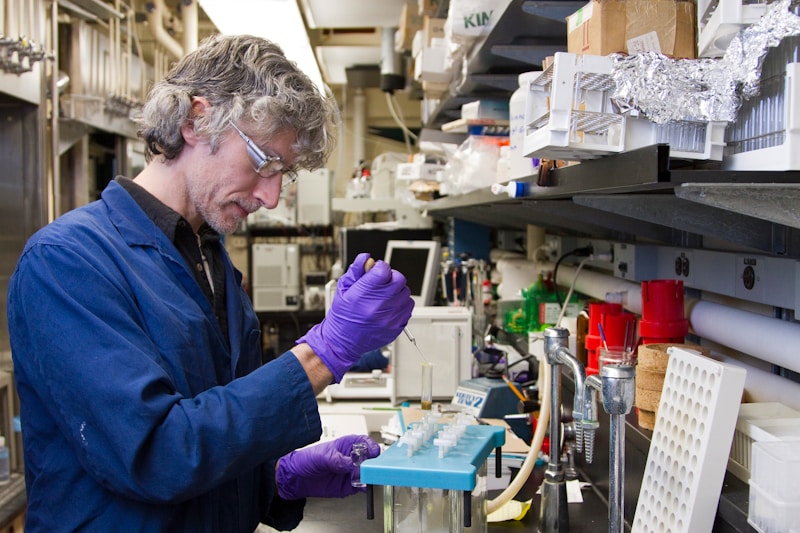10 Questions
What is the study of chromosomes and their inheritance called?
Cytogenetics
In humans, how many pairs of autosomes are there?
22
Which tissue is commonly used for chromosome analyses?
Peripheral blood
What is the chromosome number for human somatic cells?
2n: 46
What is added to the culture medium for preparing short term cultures?
Fetal calf serum
What is the function of Colcemid in chromosome isolation?
Prevents mitotic spindle formation and induces metaphase arrest
Which banding technique involves generating dark and light bands along chromosomes for morphology assessment?
G banding
What is the routine number of metaphases examined for each case in karyotype analysis?
20
What does FISH stand for in chromosome analysis?
Fluorescence In Situ Hybridization
What does C banding stain in chromosomes?
Centromeres and heterochromatic regions
Study Notes
- Chromosome isolation can be achieved using the direct method, which utilizes spontaneously dividing cells, such as bone marrow cytotrophoblastic cells.
- Culture techniques include short term (peripheral blood, bone marrow) and long term (amniotic cells, skin, solid tumor) methods.
- Preparing culture medium involves adding fetal calf serum, certain amino acids, and antibiotics.
- Heparinized blood is added to 5ml culture medium and incubated at 37°C for 3 days for blood samples. Medium changing only for long term cultures.
- Colcemid is added to prevent mitotic spindle formation and induce metaphase arrest.
- Hypotonic shock with 0.07M KCl solution causes cell swelling for easier fixation.
- Chromosomes are fixed using a 3:1 methanol:acetic acid solution and washed with fresh fixative.
- Chromosome spreading is achieved by dropping cell suspension onto microscope slides and then staining using different banding techniques.
- G banding is the most common technique, generating dark and light bands along chromosomes for morphology assessment. around 400 bands per haploid genome.
- High resolution banding (HRB) involves ~850 bands and is used for identifying chromosomal polymorphisms by staining distinct chromosomal regions.
- Routinely, 20 metaphases are examined for each case, and if an abnormality is observed, more metaphases are analyzed to determine mosaicism.
- A karyotype consists of the total chromosome number, sex chromosomes, and any abnormalities, which are designated using abbreviations.
- Differential banding techniques include G banding, Q banding, and R banding, while selective staining techniques involve C banding and NOR banding for identifying chromosomal polymorphisms.
- FISH is a method for detecting DNA sequences or evaluating chromosome organization in situ using fluorescent dye-labeled probes.
- C banding stains centromeres and heterochromatic regions, while NOR banding locates nucleolus organizing regions containing rRNA genes.
Test your knowledge of chromosomes with this quiz that covers their structure, function, and numbers in human cells. Explore the role of chromosomes in cell division and understand the differences between diploid and haploid cells.
Make Your Own Quizzes and Flashcards
Convert your notes into interactive study material.
Get started for free


